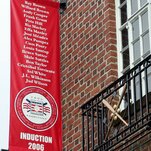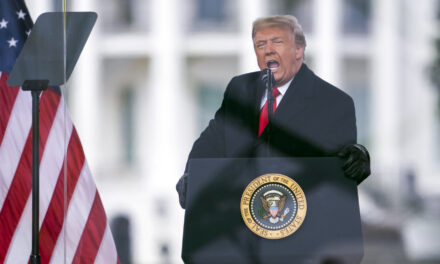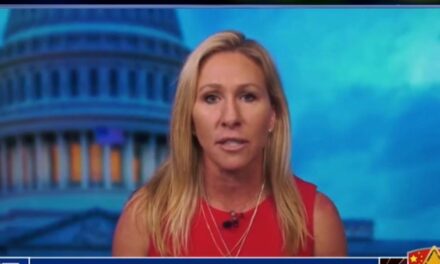
The Hall of Fame Has Grown Quiet on Negro Leagues Inductees

Fifteen years ago, the Baseball Hall of Fame inducted 17 people from the Negro leagues. The election came with some controversy and has been followed by silence.

They gathered in a conference room in Florida, a 12-person committee that would be both judge and jury. The weight of their task — considering the Hall of Fame worthiness of 39 Negro leagues and pre-Negro leagues players, managers, and executives — was perhaps greater than any they had carried in their careers.
“They had a speaker in the middle of the table, and Frank Robinson was brought on to talk to us,” said Leslie Heaphy, a professor of history at Kent State University, the founding editor of the Black Ball journal, and the only woman appointed to the Hall’s Special Committee on African-American Baseball. “He reminded us of how important this was, that we really had to think about what we were doing, and that the Hall of Fame isn’t just for anybody.”
“I thought ‘Oh my god, this is the coolest thing I’ve ever done,’ and ‘Oh my god, this is a big responsibility,’” Heaphy added. “I had both those thoughts at the same time.”
It was 15 years ago that the Special Committee on African-American Baseball was able to right a few of baseball’s wrongs by electing 17 Hall of Famers from the Negro leagues and the preceding era of Black baseball. Now, as the Hall of Fame readies for Wednesday’s induction ceremony, in which Derek Jeter, Larry Walker, Ted Simmons and Marvin Miller will be enshrined, and as Major League Baseball continues its process of acknowledging that the Negro leagues were major leagues, it is notable that no players from those leagues have been elected since.
Before that meeting in 2006, the National Baseball Hall of Fame had taken some steps to acknowledge the careers of the players, managers, and executives who, courtesy of Jim Crow and collusion, had been barred from Major League Baseball before 1947. But the Hall of Fame’s emphasis on exclusivity had led to a timid approach.
Image
It was an impassioned speech from Ted Williams in 1966 — nearly two decades after Jackie Robinson “integrated” M.L.B. — and the 1971 formation of a committee that comprised five former Negro leaguers, two Negro league team owners, two Black sportswriters, and a former M.L.B. player to start the process of acknowledging those whose careers peaked when baseball’s color line was still etched in stone.
Between 1971 and 1977, nine former Negro leaguers were inducted, beginning with Satchel Paige, Josh Gibson, Monte Irvin and Buck Leonard. (Irvin was chairman of the committee and had a vote.)
Those first nine Negro leagues inductees were the biggest and brightest Black names from baseball’s segregated era. And while they were deserving, the otherworldliness of their talents and the durability of their legacies meant they overshadowed many players who, though deserving, were passed over. Then, in 1977, the committee voted to disband.
“The intent was to vote into the Hall of Fame such outstanding performers in the old Negro leagues who, in the opinion of the committee, would have made it anyway had they not been deprived of playing in the major leagues,” a committee spokesman told United Press International upon the committee’s disbanding. “We are satisfied that mission has been accomplished.”
The responsibility to elect Negro leagues players shifted to the Hall’s Veterans Committee, but with Roy Campanella as the only Black member, the committee was hamstrung by its lack of knowledge of Black baseball. “I rely on Roy Campanella,” Joe Cronin, the former American League president and Veterans Committee member told Newsday in January 1980. “He played with some of those men. I only saw them in Pittsburgh when I was a rookie when they played before our home games.”
Buck O’Neil, who would go on to help found the Negro Leagues Baseball Museum in Kansas City in 1990, joined the Hall’s Veterans Committee in 1981. That year, Rube Foster, founder of the 1920 Negro National League, was elected, followed by Ray Dandridge, an All-Star third baseman, six years later. A 1995 rule change allowed the Veterans Committee to elect four candidates instead of two, including a single Negro leagues player. Between 1995 and 2001, Leon Day, Bill Foster, Willie Wells, Bullet Joe Rogan, Smokey Joe Williams, Turkey Stearnes, and Hilton Smith all earned the votes necessary for induction.
It was progress, but like all prior attempts to correct the Hall’s historical record, it wasn’t enough. In 2006, with the Special Committee on African-American Baseball, things were going to be different.
A Meeting of the Black Baseball Minds
Image
Image
The history of Black baseball, like any lasting institution, is vast and deep and the notion that any individual could be an expert in all facets is an impossibility. The formation of the Special Committee on African-American Baseball thus served to bridge any knowledge gaps.
With a $250,000 grant from Major League Baseball, the Hall of Fame in 2000 commissioned a deep dive into the full history of Black baseball from 1860 through 1960. Then, with the new information and statistical data revealed, the halls of Cooperstown were once again opened to candidates from the Negro leagues as well as their predecessors. This time, that opening came with no restriction on ballot size.
A list of 94 potential inductees was whittled down to 39 by a special screening committee, and in February, 12 of the foremost Black baseball scholars and historians headed to Florida to cast their votes.
They were experts in various subcategories of Black baseball — Latino involvement, teams on the east coast, the pre-Negro leagues era, etc. — and the requirement that they share their expertise ensured that no voter was oblivious to the merits of any individual on the ballot. In addition to receiving dockets of information before their Florida arrival, the committee members discussed the careers of every single candidate during the two-day session.
“My being selected to this committee was, of course, an honor,” said Dr. Adrian Burgos Jr., a history professor at the University of Illinois, Urbana-Champaign and the author of “Playing America’s Game: Baseball, Latinos, and the Color Line.” He added: “We needed folks who were experts on Latinos and the Negro Leagues.”
The committee made significant strides. Seventeen new inductees were elected, representing a watershed moment in both Hall of Fame and Negro leagues history.
Effa Manley, was the owner and business manager of the Newark Eagles who pushed for fair compensation for Negro league players post-integration. She became the first woman to gain enshrinement in the Hall, her achievements a direct reflection of the revolutionary power of Black baseball. Willard Brown was best known as the first Black player to homer in the American League, but he was a far more dominant slugger with the Kansas City Monarchs. And there was Alex Pompez, who rose to fame while running the Cuban Stars and the New York Cubans before becoming the director of international scouting for M.L.B.’s New York Giants. It was an impressive class of inductees, none of whom were alive to enjoy it.
Still, when stories began to break about the 2006 election, the narrative was often less about who got in and more about who didn’t — namely O’Neil, the former Kansas City Monarchs first baseman, as well as Orestes “Minnie” Miñoso, an Afro-Latino member of the New York Cubans who became the first Black player on the Chicago White Sox in 1951.
Image
“As great as it was to have all those candidates be recognized, we had two living candidates who were extremely popular among the common baseball fan and it just would have meant a lot to both of those men personally, as well as to the baseball community if they could have been feted,” said Dr. Raymond Doswell, vice president of curatorial services at the Negro Leagues Baseball Museum. “For many baseball fans, it leaves kind of a hole in their hearts.”
But Hall of Fame induction is, in theory, not a popularity contest. It is a game of statistics and records, and of rigid lenses through which to analyze them. Singular frameworks like “player,” “manager,” or “executive” make it nearly impossible to comprehend the full impact of a career like O’Neil’s, for example. And even the most detailed stat line can’t consider the psychological and emotional trauma of being the first Black anything.
“The rules of eligibility for the National Baseball Hall of Fame were initially created to address those individuals who had been in Major League Baseball; they were not created for those in the Negro leagues,” Burgos said. “Beyond the realities of the field, they’re facing an additional set of circumstances. They are dealing with teammates that do not like them, coaches, managers, and opponents who are sometimes openly hostile and actively engaging in microaggressions. And they still succeeded. How do we get that into our deliberations?”
Doswell likens media focus on O’Neil and Miñoso to sports fans who boo poorly performing players or teams. It’s their right, he said, and if reporters chose to skew their coverage of the induction to what they considered an egregious oversight, that was their right, too.
Heaphy understands the disappointment of baseball fans, media, and even members of the committee who wanted to see O’Neil and Miñoso receive their own plaques in Cooperstown. But she also laments the stories that were lost during the mourning — the careers that remained marginalized even at their points of highest achievement.
“You can look back at all of the articles that were written, and how many of them talk about Willard Brown, or Cristobal Torriente, or Frank Grant?” she said. “They deserve their moment and their opportunity to have their stories told. Wasn’t that what Buck was all about?”
The Work That Remains
Image
Image
The Hall of Fame’s silence on further consideration for Black baseball participants added more fuel to simmering frustrations, as decades’ worth of induction fits and stops seemed to come to a final halt.
“I’ll just be honest,” Heaphy said, “it’s been a surprise, and more important, a disappointment, that there’s been nothing in the 15 years since. The idea was that, as there was more information, there’d be more opportunity. And there hasn’t been.”
A recent announcement from the Hall may change that. A newly formed Early Baseball Era Committee which will focus on baseball’s early eras will consider the careers of all participants in professional baseball before 1950, including those from Black baseball. But for all the excitement, there are drawbacks. The committee will meet only once every 10 years, beginning in December 2021. While there is no limit on the number of Negro leaguers who can be included, the ballot is confined to just 10 people, total. And barring future changes to the committee, the level of Black baseball expertise found in 2006’s group will likely not be present.
In 2016, Jeff Idelson, then serving as the Hall of Fame’s president, told the Sporting News that 2006 “would be the final election for those who performed in the Negro leagues unless new research came out that would warrant another look.” Perhaps Major League Baseball’s recent decision to “elevate” the status of the Negro leagues to major league level, coupled with the creation of a more comprehensive repository of Negro leagues statistics through Baseball Reference, could be enough to justify another special election similar to the one held 15 years ago. But if that doesn’t happen, the Early Baseball Era Committee may present the only hope for candidates who remain locked out of Cooperstown.
“In many ways, I think this is an even bigger opportunity, or maybe the potential for an even bigger missed opportunity,” said Heaphy. “If you can’t make the argument now, when are you going to be able to make it?”
Source: https://www.nytimes.com/2021/09/06/sports/baseball/negro-leagues-hall-of-fame.html


















